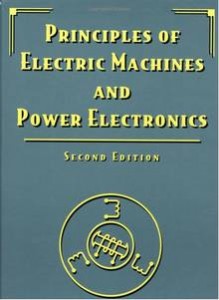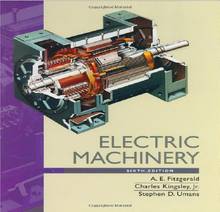Electrical machines and drives – Readings
Course subject(s)
01. Introduction to Electrical machines and drives
02. Maxwell’s equations and Magnetic circuits
03. Principles of electromechanics
04. DC Machines and Drives
05. DC Machines continued
06. DC Machine drivers and Induction machines
07. Induction machines 1
08. Induction machines 2
09. Synchronous Machines
10. Permanent magnet AC machines
11. Stepper, Single phase and Universal motors, and Switched reluctance machines
Readings
The course Electrical machines and drives uses the following books as study material;
- Principles of electric machines and power electronics,P.C. Sen,New York: John Wiley and Sons, 1997 (second edition).
- Electric Machinery, A.E. Fitzgerald, C. Kingsley, S.D. Umans, New York: McGraw-Hill, 2003 (sixth edition).
Principles of electric machines and power electronics
- Reference: Paresh C. Sen (1996), Principles of Electric Machines and Power Electronics.John Wiley & Sons, Inc.ISBN 0471022950.
This new edition combines the traditional areas of electric machinery with the latest in modern control and power electronics. It includes coverage of multi-machine systems, brushless motors and switched reluctance motors, as well as constant flux and constant current operation of induction motors. It also features additional material on new solid state devices such as Insulated Gate Bipolar Transistors and MOS-Controlled Thrysistors.In P. C. Sen’s second edition of Principles of Electronic Machines and Power Electronics, the author responds to recent changes in technology in order to update and enhance this popular text. This text is written to allow an instructor to select topics for coverage in either a one or two semester course in electric machines. Sections and entire chapters can be skipped without losing continuity. The new edition combines traditional areas of electric machinery covered in the first edition with the latest in modern control and power electronics.

Electric Machinery

Reference: A.E. Fitzgerald, C. Kingsley and S.D. Umans (2003), Electric Machinery. McGraw-Hill Science/Engineering/Math. ISBN 0073660094.
The chief objective of Electric Machinery continues to be to build a strong foundation in the basic principles of electromechanics and electric machinery. Through all of its editions, the emphasis of Electric Machinery has been on both physical insight and analytical techniques. Mastery of the material covered will provide both the basis for understanding many real-world electric-machinery applications as well as the foundation for proceeding on to more advanced courses in electric machinery design and control. Power electronics are a significant component of many contemporary electric-machine applications. This topic is included in Chapter 10 of this edition ofElectricMachineryin recognition of the fact that many electric-machinery courses now includea discussion of power electronics and drive systems. However, it must be emphasizedthat the single chapter found here is introductory at best. One chapter cannot begin todo justice to this complex topic any more than a single chapter in a power-electronicstext could adequately introduce the topic of electric machinery.The approach taken here is to discuss the basic properties of common power elec-tronic components such as diodes, SCRs, MOSFETs, and IGBTs and to introducesimple models for these components. The chapter then illustrates how these compo-nents can be used to achieve two primary functions of power-electronic circuits indrive applications: rectification (conversion of ac to dc) and inversion (conversion ofdc to ac). Phase-controlled rectification is discussed as a technique for controlling thedc voltage produced from afixed ac source. Phase-controlled rectification can be used to drive dc machines as well as to provide a controllable dc input to inverters in acdrives. Similarly, techniques for producing stepped and pulse-width-modulated wave-forms of variable amplitudes and frequency are discussed. These techniques are at theheart of variable-speed drive systems which are commonly found in variable-speedac drives.

Electrical machines and drives by TU Delft OpenCourseWare is licensed under a Creative Commons Attribution-NonCommercial-ShareAlike 4.0 International License.
Based on a work at https://ocw.tudelft.nl/courses/electrical-machines-and-drives/.



